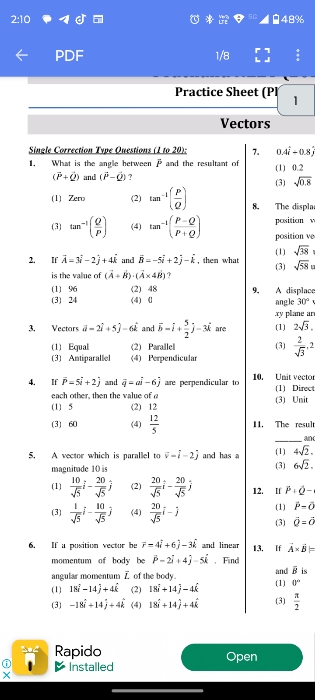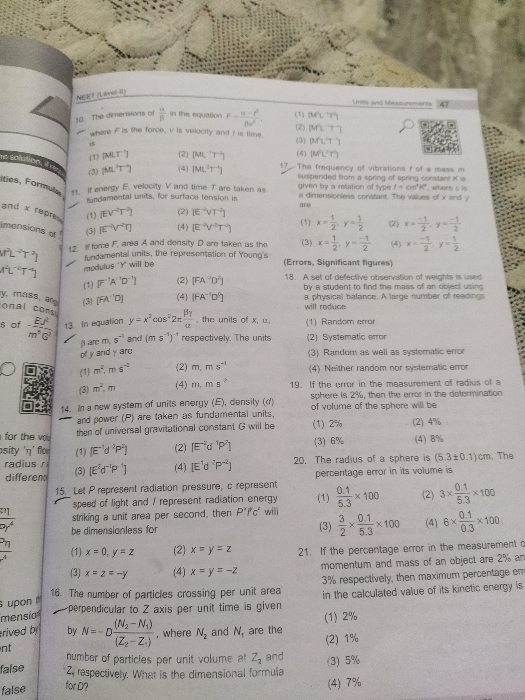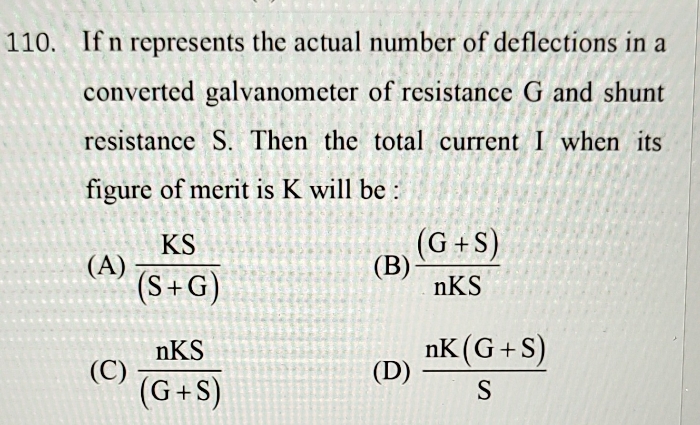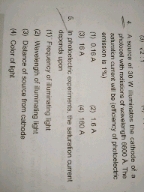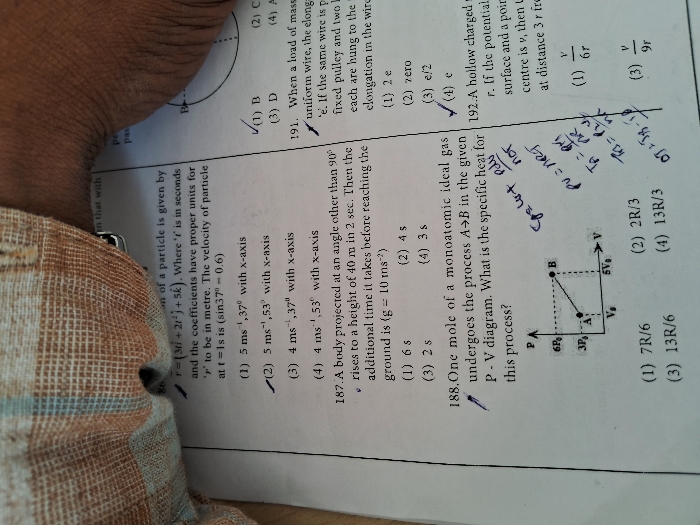NEET Class neet Answered
Please answer this
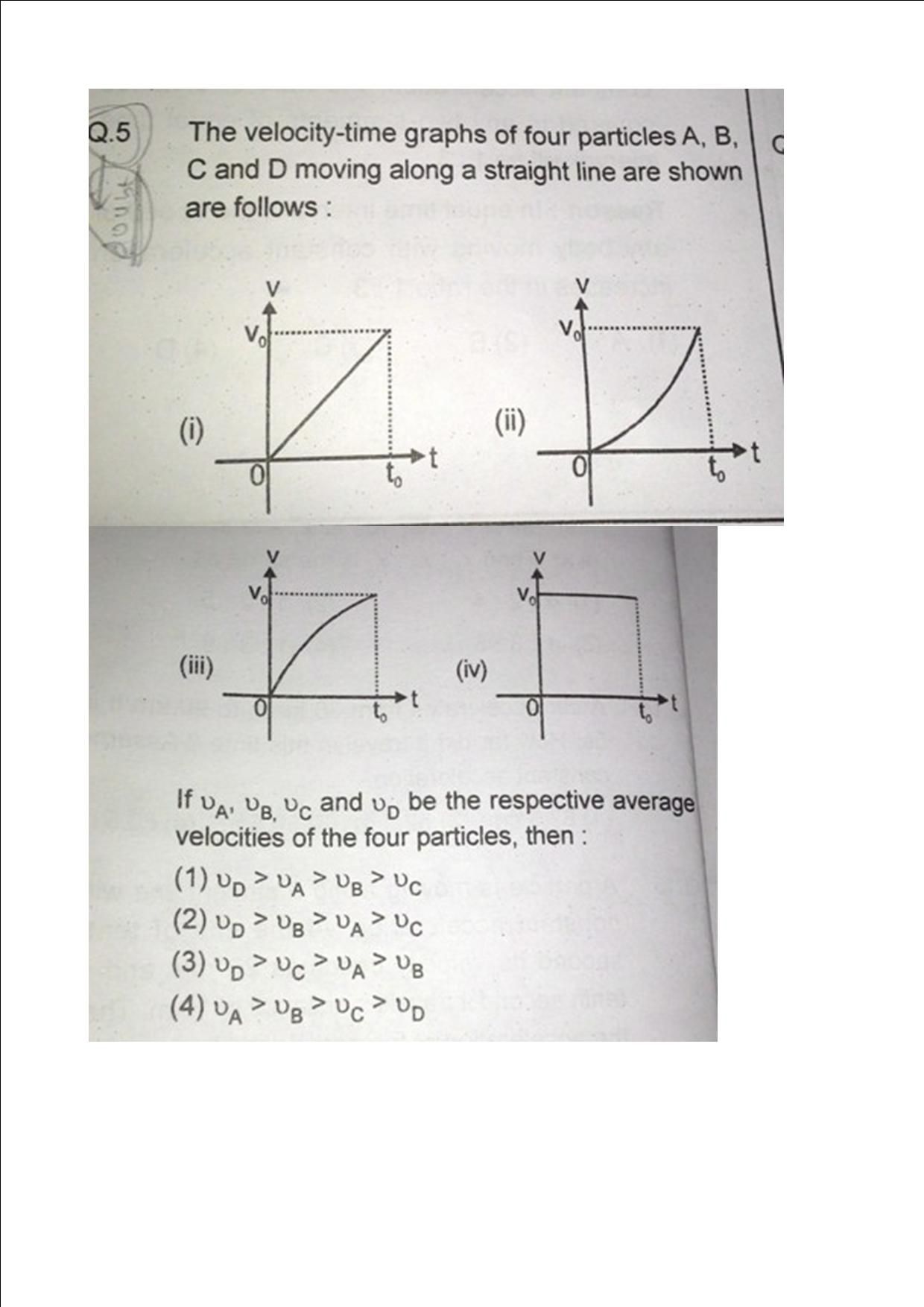
Asked by Prashant DIGHE | 22 Apr, 2020, 11:13: PM
It can be seen from graphs, all particles are moving with increasing velocity or constant velocity.
Hence, average velocity = distance / time . If time of travelling is same for all particles,
then average velocity is proportional to distance travelled.
Area under the curve in velocity-time graph equals distance travelled.
if we arrange the area under the curve in decreasing order, the we have
Area (D) > area (C) > area (A) > area (B)
Hence velocites of particlses :- vD > vC > vA > vB
Answered by Thiyagarajan K | 23 Apr, 2020, 07:59: AM
Application Videos
NEET neet - Physics
Asked by shreesinghjsp | 17 May, 2024, 09:51: PM
NEET neet - Physics
Asked by kanika4070 | 13 May, 2024, 11:54: PM
NEET neet - Physics
Asked by vk3460092 | 11 May, 2024, 05:31: PM
NEET neet - Physics
Asked by tejaskadiyan148 | 05 May, 2024, 11:52: AM
NEET neet - Physics
Asked by hardikmittal25 | 03 May, 2024, 02:57: PM
NEET neet - Physics
Asked by sa1033278 | 02 May, 2024, 07:37: PM
NEET neet - Physics
Asked by bidyutpravarout79 | 26 Apr, 2024, 09:40: PM
NEET neet - Physics
Asked by ramanjaneyuluoguru | 25 Apr, 2024, 04:18: PM
NEET neet - Physics
Asked by shatakshibhatt9 | 20 Apr, 2024, 07:52: PM



